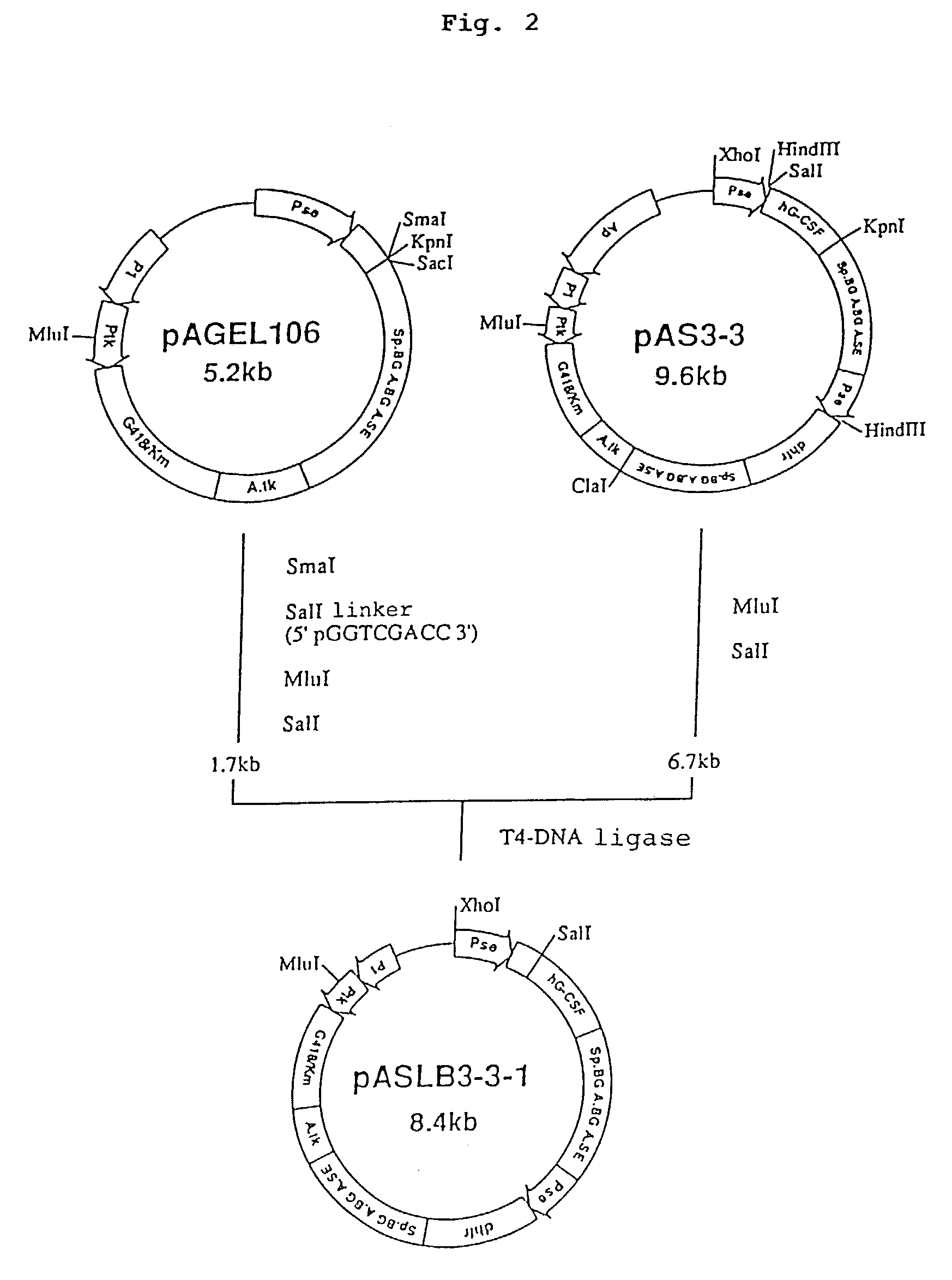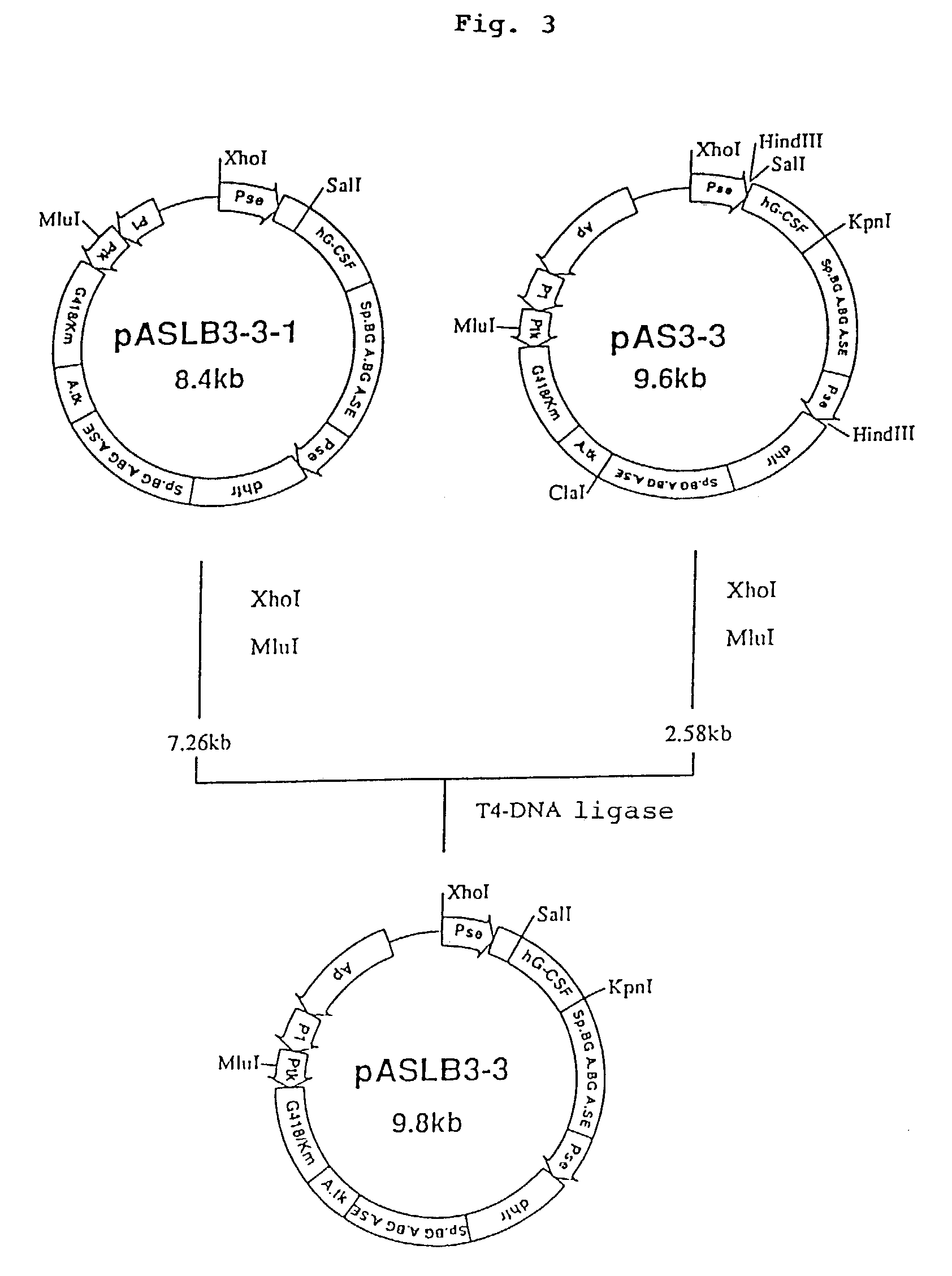Α,2,8-sialyltransferase
a technology of sialyltransferase and sialyltransferase, which is applied in the direction of transferases, machines/engines, mechanical equipment, etc., can solve the problems of limited quantity of gd3 that can be obtained by tissue purification, low yield, and complex chemical synthesis of gd3 , to achieve the effect of increasing the amount of ganglioside gd3 present on the cell surfa
- Summary
- Abstract
- Description
- Claims
- Application Information
AI Technical Summary
Benefits of technology
Problems solved by technology
Method used
Image
Examples
example 2
Synthesis of Ganglioside GD3 in KJM-1 Strain Harboring α-2,8-sialyltransferase Expression Plasmid
[0189]The plasmids pAMoPRC3Sc (direct expression cloning vector; control) and pAMoPRWP1 (α-2,8-sialyltransferase expression plasmid) were prepared using Qiagen's plasmid preparation kit>plasmid6 cells, the cells were suspended in 8 ml of RPMI1640-ITPSGF medium and cultured in a carbon dioxide incubator at 37° C. for 24 hours. Then, G418 (Gibco) was added to a concentration of 0.5 mg / ml and incubation was continued for 7 days. Then, 22 ml of RPMI1640-ITPSGF medium (containing 0.5 mg / ml of G418) was added and incubation was further continued for 5 days. The thus-obtained transformants were cultured in RPMI1640-ITPSGF medium containing 0.5 mg / ml of G418. About 1×106 cells were placed in a microtube (1.5 ml; Eppendorf) and cells were collected by centrifugation (550×g, 7 minutes). The cells were then washed with 1 ml of phosphate-buffered saline (PBS) containing 0.1% of sodium azide (A-PBS; ...
example 3
Secretory Production of α-2,8-sialyltransferase
1. Construction of Secretory Expression Vector pAMoPRSA
(1) Construction of pAGE147 (cf. FIG. 18)
[0191]A plasmid, pAGE147, was constructed by replacing the SV40 early gene promoter of pAGE107 with the long terminal repeat (hereinafter LTR) promoter of the Moloney murine leukemia virus. The plasmid pPMOL1 (JP-A-1-63394; 2 μg) was dissolved in 30 μl of Y-0 buffer, 20 units of SmaI was added and the digestion reaction was carried out at 30° C. for 3 hours. Then, sodium chloride was added to a concentration of 50 mM, 20 units of ClaI was added and the digestion reaction was carried out at 37° C. for 2 hours. The reaction mixture was subjected to agarose gel electrophoresis and a DNA fragment (about 0.6 kb) containing the LTR promoter of the Moloney murine leukemia virus was recovered.
[0192]Separately, 25 picomoles (pmoles) each of the two DNA linkers synthesized in Example 1, section 1-(8) were dissolved in 10 μl of T4 kinase buffer, 5 units...
PUM
| Property | Measurement | Unit |
|---|---|---|
| pH | aaaaa | aaaaa |
| pH | aaaaa | aaaaa |
| concentration | aaaaa | aaaaa |
Abstract
Description
Claims
Application Information
 Login to View More
Login to View More - R&D
- Intellectual Property
- Life Sciences
- Materials
- Tech Scout
- Unparalleled Data Quality
- Higher Quality Content
- 60% Fewer Hallucinations
Browse by: Latest US Patents, China's latest patents, Technical Efficacy Thesaurus, Application Domain, Technology Topic, Popular Technical Reports.
© 2025 PatSnap. All rights reserved.Legal|Privacy policy|Modern Slavery Act Transparency Statement|Sitemap|About US| Contact US: help@patsnap.com



